Hike down the Bright Angel Trail to the Colorado River.
Bright Angel Trail is the park’s most popular rim-to-river route, offering spectacular views, rest houses, water (seasonal), and shade at Havasupai Gardens.
Note: If you are planning to camp anywhere below the rim you must get a backcountry camping permit through the backcountry office.
Hike the Bright Angel Trail
Day hikers have several options: turn around at the Mile-and-a-Half or Three-Mile rest houses, Havasupai Gardens (formerly called Indian Garden), or Plateau Point (described below as an optional side trip). Backpackers can camp at the Havasupai Gardens or Bright Angel campgrounds.
Switchback to Mile-and-a-Half and Three-Mile rest houses
As you journey down the Bright Angel Trail, you descend into rock that is almost 2 billion years old. Starting with the youngest, the Kaibab Limestone at the trailhead, you progress down gentle switchbacks through progressively older rock. The canyon’s steep, vertical walls limit rim-to-river routes. But this trail follows the Bright Angel Fault, a naturally occurring break that allows access to the inner canyon.
Long, sweeping switchbacks take you to Mile-and-a-Half rest house at, you guessed it, 1.5 miles. Take a moment to enjoy the shade, refill your water bottle (May-October), and rest your feet. Pit toilets are located just down the trail to your right.
Any rim-to-river hike in the canyon involves seemingly endless switchbacks, and the Bright Angel Trail is no exception. Every turn brings an impossibly more beautiful view as you drop deeper into the canyon. Zigzag your way down through the iron-rich Supai Formation to the top of the Redwall Limestone, where Three-Mile rest house waits with shade, water (May-October), and pit toilets.
Havasupai Gardens: a desert oasis
From Three-Mile rest house, a series of switchbacks known as Jacob’s Ladder takes you down the Redwall Limestone. As you approach Havasupai Gardens, the grade flattens out and makes for easy walking across the slopes of Bright Angel Shale.
Cottonwood trees, flowing watter, and lush grasses mark your arrival at Havasupai Gardens, a shady respite on this hike. Around 4.5 miles, you pass a ranger station on your left, followed by the campground (permit required). Pit toilets, water (year-round), and shaded benches are farther down the trail.
Final switchbacks: the Devil’s Corkscrew
Soon after leaving Havasupai Gardens, you reach trail junctions with Tonto West and Tonto East. Continue south along Garden Creek as it cuts a ravine into the terraced ledges of Tapeats Sandstone. A chockstone around 5.25 miles marks the beginning of the Tapeats Narrows, where the creek has sculpted channels and plunge pools into the bedrock.
The trail branches away from Garden Creek in a series of switchbacks known as the Devil’s Corkscrew. This lightning bolt-like trail gashes its way through the dark cliffs of 2-billion-year-old Vishnu Schist, the oldest rock in the Grand Canyon. Avoid hiking this section during the hottest part of the day—the almost-black walls absorb heat and can cook you in the afternoon sun. A few long meanders lead into tight, sharp switchbacks that descend about 500 feet in a half mile. Beyond the corkscrew, the trail levels out as you begin following Pipe Creek.
Around 7 miles, you arrive at another set of plunge pools and waterfalls where Garden Creek flows into the Pipe Creek drainage. Prickly pear, willows, and brittlebush line the banks as the trail descends gently to the River House rest area. A side trail leads to the shore of the Colorado River and Pipe Creek Beach, while the Bright Angel trail continues to the right of the pit toilets.
Turn east and contour above the river, traveling across sand dunes for the next 1.5 miles. You arrive at a suspension bridge, which not only allows hikers passage across the swift Colorado River, but also supports a transcanyon waterline that carries water from the north side of the canyon to Havasupai Gardens. After crossing the river, the trail continues past park buildings and private residences. Follow signs towards Bright Angel Campground until the trail turns north along Bright Angel Creek around 9 miles. The campground is a little ways up the creek, and camping is by permit only. Phantom Ranch, which has cabins, bunkhouses and a dining room facility, is about a half mile farther north. Reservations typically need to be made months in advance to stay here.
If you are hiking during the warmer months, plan on leaving well before sunrise for the climb back up to Grand Canyon village.
Optional side trip to Plateau Point
If you’re day hiking or spending a night at Havasupai Gardens, you may want to go to Plateau Point as a side trip. This is an easy 3-mile, out-and-back hike that takes you to an overlook on the edge of the Tonto Platform with excellent views of the Colorado River.
The Plateau Point Trail begins south of the pit toilets at Havasupai Gardens. Just past a livestock area, look for a wooden sign that points towards Plateau Point and Tonto West trails. You cross Garden Creek and contour along the Tonto Platform for about a mile. When you reach a junction with the Tonto West Trail, veer right and continue south towards Plateau Point.
Another half mile and you arrive at the overlook. The trail dips down to a rock platform bound by safety rails. From here, you can both see and hear the Colorado River raging a thousand feet below. On the north side of the canyon, you can see (left to right): Cheops Pyramid, Bright Angel Canyon, and Zoraster and Brahma Temples. Retrace your steps to return to Havasupai Gardens.
Directions to the Bright Angel trailhead
The Bright Angel trailhead is located in Grand Canyon Village on the South Rim just west of the Bright Angel Lodge near the beginning of the West Rim road shuttle stop.
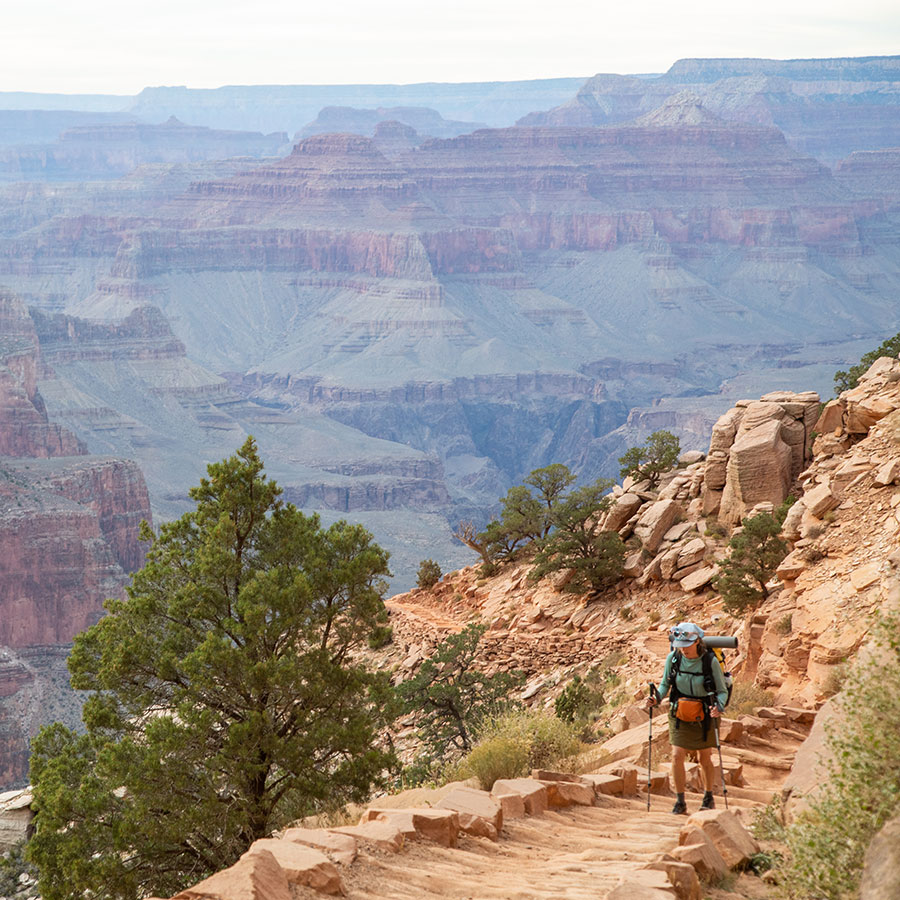
General Location Grand Canyon National Park, 65 miles northwest of Flagstaff, Arizona
Closest Towns Flagstaff, Arizona
Distance 9.5 miles (15.3 km)
Trailhead Elevation 6,800 feet (2,072 m)
Highest/Lowest Elevation 6,800/2,350 feet (2,072/716 m)
Fees Park entrance fee required. Camping below the rim requires backcountry permits and additional fees. See website listed below for current information
Pets Not Allowed
More Info NPS website
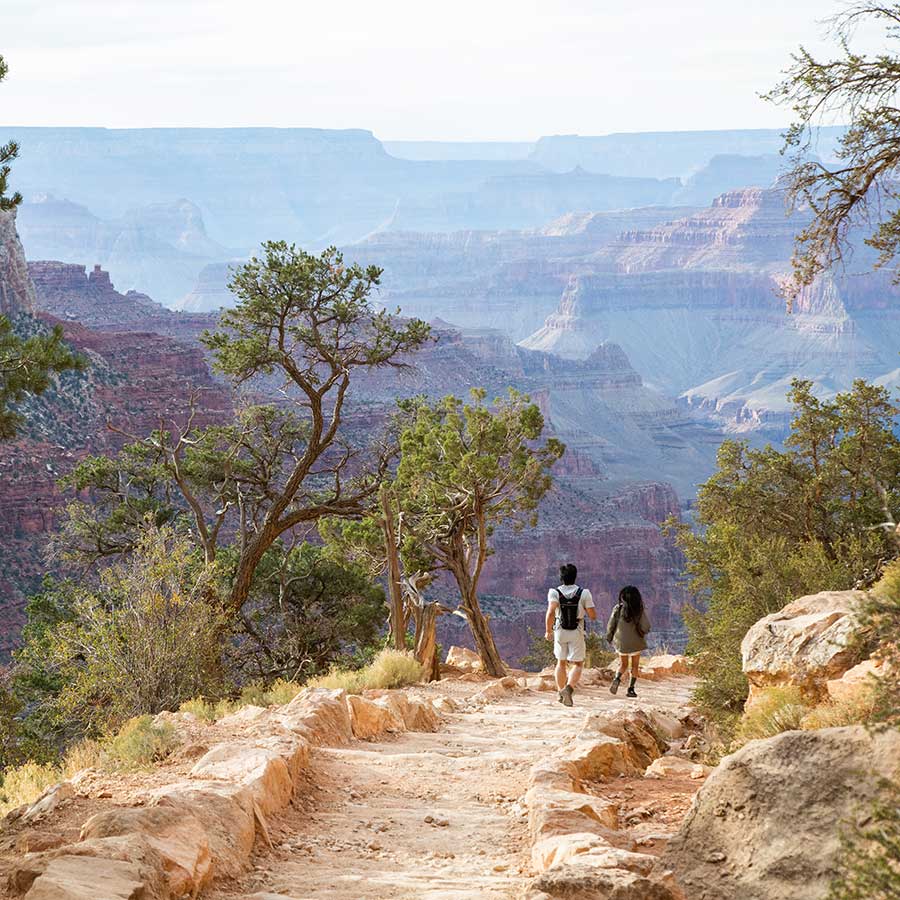
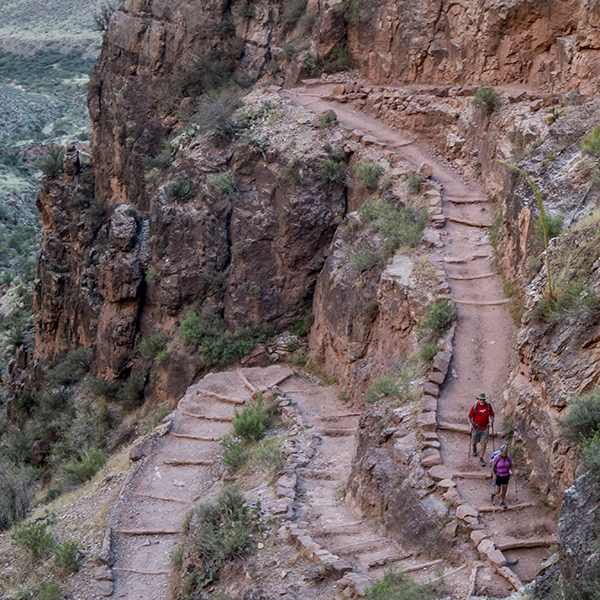
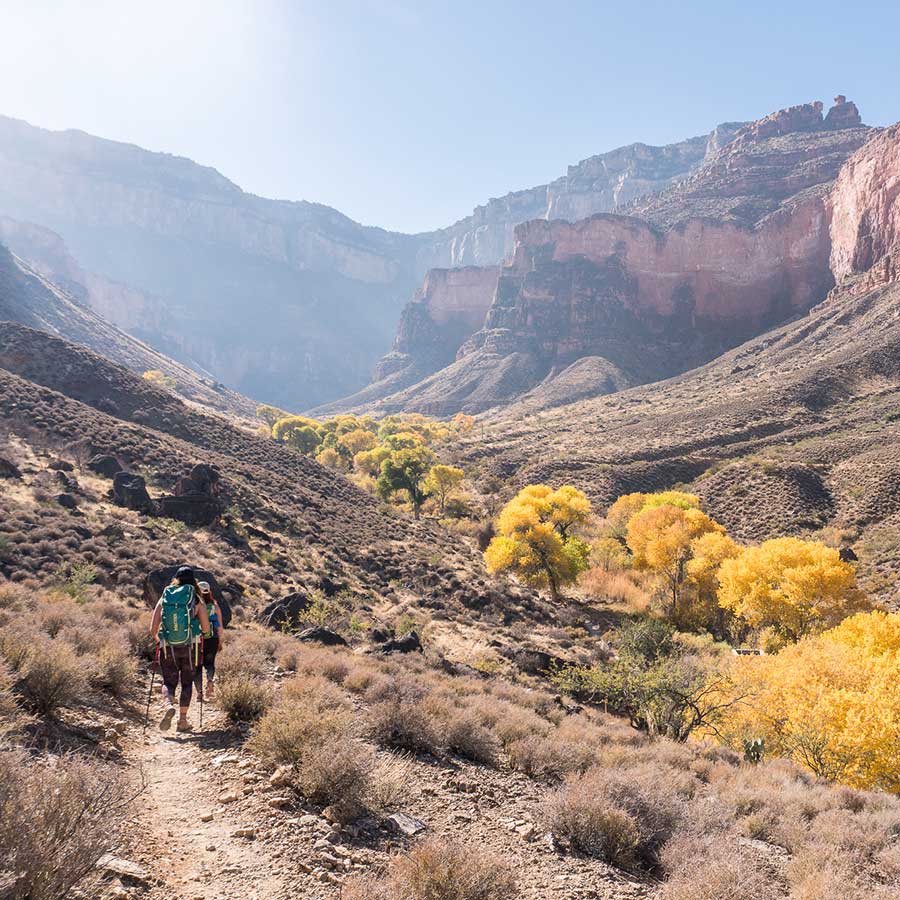
Adventure awaits
Sign up to get three hikes in your inbox every month for a year.
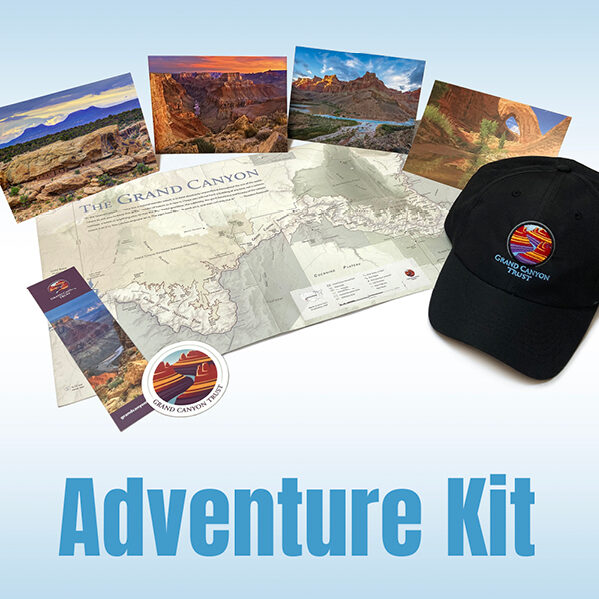
Special membership offer
Join the Grand Canyon Trust today to receive your adventure kit:
- $25 donation: a Grand Canyon map, The Advocate magazine subscription, bookmark, and sticker
- $75 donation: everything above plus four stunning note cards
- $100 donation: all the benefits of the $75 level, plus a Grand Canyon Trust hat
Related Hikes by Destination
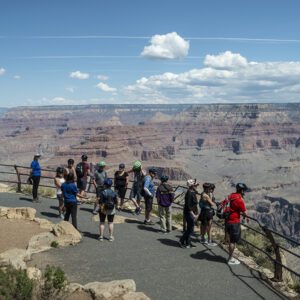
Distance: Up to 13 miles
Difficulty: Easy
Type: Point-to-point
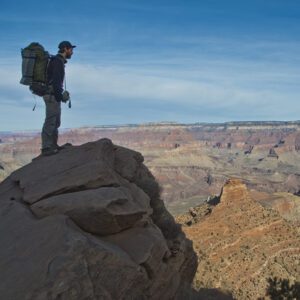
Distance: 6.6 miles (10.6 km) one way
Difficulty: Moderate
Type: Out and back
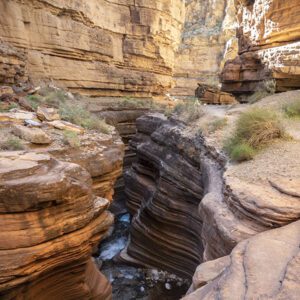
Distance: 27.9 miles
Difficulty: Strenuous
Type: Out and back
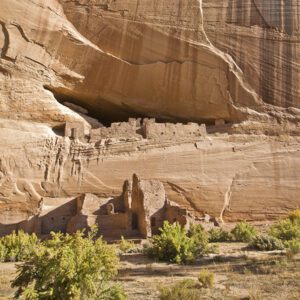
Distance: 2.6 miles (4 km)
Difficulty: Moderate
Type: Out and back
